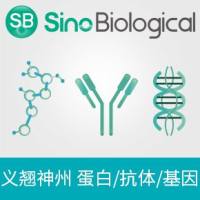Fluorescent Indicator Methods to Assay Functional CFTR Expression in Cells
Halide-sensitive fluorescent indicators have been useful in cystic fibrosis (CF) research in assaying functional cystic fibrosis transmembrane conductance regulator (CFTR) expression in cells. Some applications (for review, see refs. 1 and 2 ) have included measurements in native airway cells (3 ), demonstration that CFTR is a chloride channel (4 ,5 ), functional analysis of mutant CFTRs (6 -8 ), and analysis of the efficacy of CFTR gene replacement in human gene therapy trials (9 -11 ). A promising new application of halide indicators is in high-throughput screening to discover drugs that may correct defective cellular processing and/or function of disease-causing CFTR mutants. Another new application is the use of cell-impermeable chloride indicators to measure chloride concentration in the airway surface liquid in cell culture models and in the in vivo trachea (12 ). The first biological application of a chloride indicator, SPQ, was reported in 1987 (13 ). As described below, numerous advances in indicator technology have been made since the first report, including the development of cell-permeable (14 ), cell-impermeable (15 ,16 ), long-wavelength (17 ,18 ), and dual-wavelength (19 ) indicators, as well as the development of a targetable green fluorescent protein-based halide indicator (20 ). The major advantages of a fluorescence-based assay of CFTR function are sensitivity, technical simplicity, and the ability to assay function in single cells and heterogeneous cell mixtures. Fluorescence assays are rapid, quantitative, and technically simple, and can be performed using fluorescence microscopy, automated fluorescence plate readers, or cell cytometry. In contrast, assays using radioactive 36 Cl require relatively large amounts of materials, are technically difficult, and cannot be used to study single cells or heterogeneous cell mixtures. Single-channel electrophysiological measurements of CFTR function are also technically challenging and generally not suitable for screening applications; however, it should be noted that data on single-channel properties (open probability, gating kinetics, current-voltage relationships) cannot be obtained by fluorescence methods. This chapter describes the available fluorescence-based assays of CFTR function. Technical details and useful practical hints are provided, and potential pitfalls are mentioned.
![预览]()






